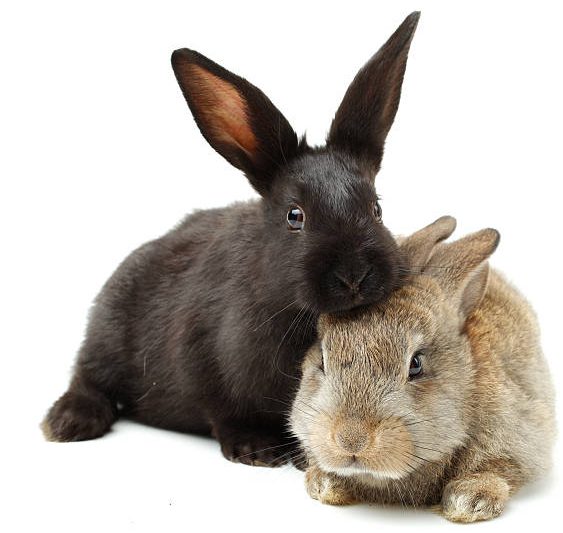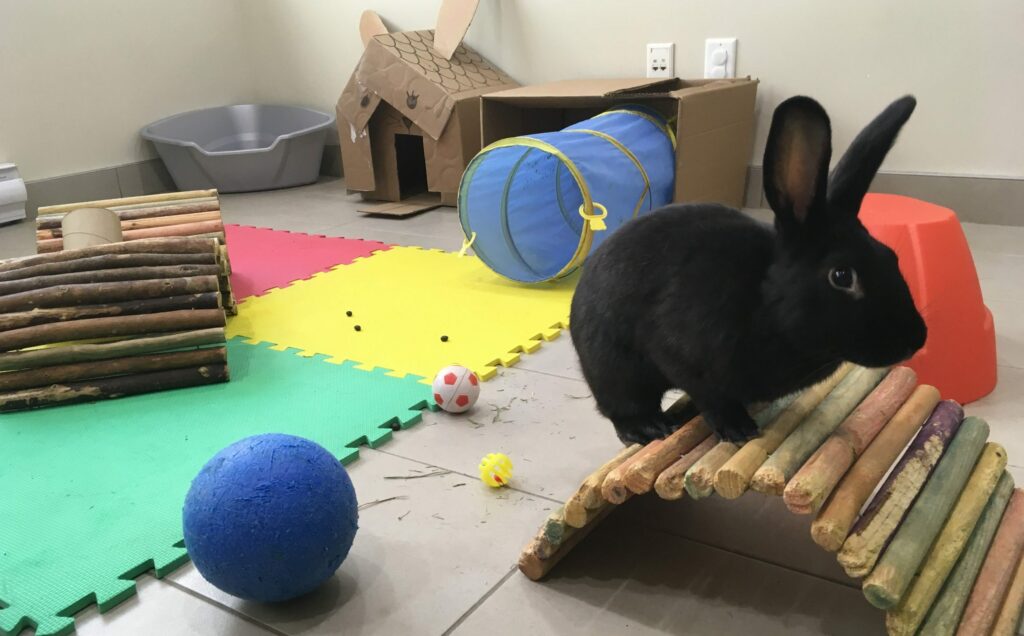What I Should Know Before Adopting a Rabbit
By Patricia Durocher • 10 December 2024
Many families decide to adopt a rabbit because the animal seems to have fewer needs than a cat or dog. It is also an animal that is often requested by children, especially when it is not possible to have a larger animal at home or if family members are allergic to cats and dogs.
But be careful!
Here are several important facts everyone should know before adopting a rabbit:
- Many people develop allergies to rabbit or hay. It is a very allergenic animal.
- The rabbit is not at all recommended for young children since it has a fragile frame and a nervous temperament. It does not particularly like to be handled.
- Rabbits need plenty of space to be happy and should never be confined to a cage.
- The rabbit can live 7-10 years so it is a long term commitment. If it is to please the children, will they want to bring it with them when they grow up?
- Veterinary care for exotic animals is more expensive and veterinary clinics that treat them are rarer.
- It is strongly recommended to have your rabbit sterilized for health and behavioral reasons.
- Rabbits are territorial by nature and can bite if their environment is not respected. It is essential to learn the rabbit’s body language.
- The rabbit is happier if it lives with a fellow rabbit, but the introduction between two rabbits can sometimes be very difficult.
Far be it from us to discourage people from adopting this wonderful animal, since there are also several positive points : 
- Rabbit can be toilet trained and use the litter box
- It is an endearing, intriguing animal that can have a lot of personality.
- Very often, it can coexist with cats and dogs.
- He is smart enough to understand instructions or learn tricks.
- He has a range of emotions and behaviors to communicate his state of mind to us. It’s exciting to learn to discover what our rabbit is telling us.
Now that you know the big secrets of the rabbit, here are some more in-depth tips for those who decide to take the plunge and adopt this animal:
Power supply
Hay should be available at all times (as much hay as the rabbit’s size per day) and is the basis of their diet. As adults you should limit to 1/8 cup per 6 pounds of weight of adult pellets (Oxbow brand recommended). Fresh water should be available at all times. Some prefer water bowls and others prefer water bottles. Every day, offer about 2 cups of vegetables for a 6 pound rabbit:
- Lettuce (except iceberg), turnip greens, small piece of carrot, celery, dandelion greens, parsley, basil, thyme, rocket, parsnip.
- Fruits should be considered a treat, offering a maximum of one teaspoon per day: apples, pears, cherries, strawberries, peaches, melon.
Daily maintenance
Every day, you will need to clean his living environment, whether it is a cage, an enclosure, his litter box or his bed. Some rabbits are clean and can do their business in a litter box. When he chooses where he does his business in the cage, install a litter box there so that he becomes clean. It is especially important not to leave vegetables rotting in the rabbit’s environment.
The rabbit is an animal that can lose a lot of hair, especially during moulting. It is therefore important to quickly get it used to daily brushing.
Cohabitation

Rabbits are meant to live with a partner. However, they should not be kept together unless they are spayed or neutered and have been carefully introduced. Before adopting a rabbit, consider having two at a time. Also, some rabbits enjoy the company of their feline and canine friends.
Veterinary care
Like all domestic animals, rabbits should visit their veterinarian at least once a year as a precaution. It is important to have the condition of their teeth checked, as they never stop growing. Also, it is ideal to think about having your rabbit sterilized, especially if you want to have it live with another rabbit. Keep the phone number of an emergency exotic animal veterinarian on hand, as a rabbit’s condition can deteriorate very quickly. A little tip: you should always consult a doctor when your rabbit stops having stools.
Environment
We strongly suggest that the rabbit lives in complete freedom so that it can flourish. The small cages offered in pet stores are not at all adapted to the behavior of the rabbit who needs to run and jump. If complete freedom is not possible, there are several types of enclosures to make yourself to make its environment enriching. It is important to protect your rabbit’s environment to avoid breakage or even electric shocks. The rabbit likes to chew, especially wood but also books, electrical wires and anything that gets in its way.
Exercises and toys
If you decide to put your rabbit in a cage (not recommended) or an enclosure, you must take him out for at least two hours a day so that he can run, jump and explore.
The rabbit is a sprinter at heart and needs wide open spaces to stretch its legs. You can enrich its environment with cardboard boxes, balls and chew toys (e.g. apple tree branches), vegetable clothesline, etc.
Behavior
Rabbits are prey animals in nature and have a nervous temperament. They must be tamed quietly. When you pick up your rabbit, make sure to hold its hind legs and buttocks to prevent it from injuring itself by trying to kick. Rabbit behavior can be complex to read since it is sometimes less clear than that of cats or dogs. But by reading a few books on the subject, and taking the time to observe your rabbit, you will be able to understand when it wants to be petted, to have attention or rather when it wants peace. Many rabbits are subscribed because they have bitten. It is important to understand that in most cases, it is not a question of aggression but of territoriality. A few adjustments in our behavior are enough to prevent this from happening again.
In conclusion, rabbits are the great misunderstood of domestic animals. They are the third most abandoned animal in shelters. We regularly see the same reasons for abandonment, which leads us to believe that their needs are really misunderstood when they are adopted.
The rabbit should ideally not be considered as the alternative choice when a cat or dog is not possible. It is complex, has many needs and interactions can sometimes be non-existent at first.
Do your research before you adopt. Talk to people who have rabbits. Ask to be a foster parent for shelters that take rabbits. Do your reading on the subject. Subscribe to Facebook groups about rabbits. Maybe you’ll discover a passion or, rather, a reason not to adopt.
Our references:
Website: The Hard Life of the Urban Rabbit
Specialized shelter: ALSA: adoption of homeless rabbits
Rabbit Facebook group: https://www.facebook.com/groups/LesLapinsduQuebec





Leave a Reply